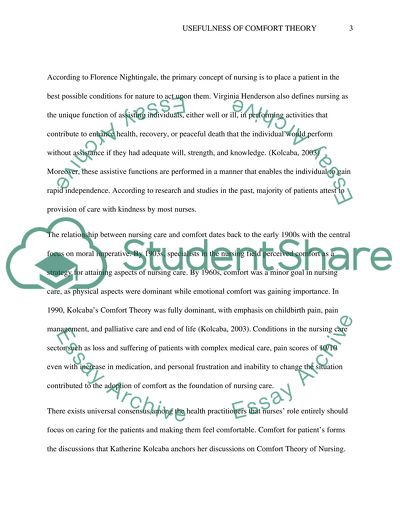Cite this document
(“Usefulness of Comfort Theory Research Paper Example | Topics and Well Written Essays - 2250 words”, n.d.)
Usefulness of Comfort Theory Research Paper Example | Topics and Well Written Essays - 2250 words. Retrieved from https://studentshare.org/nursing/1445906-critique-kolcaba-theories
Usefulness of Comfort Theory Research Paper Example | Topics and Well Written Essays - 2250 words. Retrieved from https://studentshare.org/nursing/1445906-critique-kolcaba-theories
(Usefulness of Comfort Theory Research Paper Example | Topics and Well Written Essays - 2250 Words)
Usefulness of Comfort Theory Research Paper Example | Topics and Well Written Essays - 2250 Words. https://studentshare.org/nursing/1445906-critique-kolcaba-theories.
Usefulness of Comfort Theory Research Paper Example | Topics and Well Written Essays - 2250 Words. https://studentshare.org/nursing/1445906-critique-kolcaba-theories.
“Usefulness of Comfort Theory Research Paper Example | Topics and Well Written Essays - 2250 Words”, n.d. https://studentshare.org/nursing/1445906-critique-kolcaba-theories.


